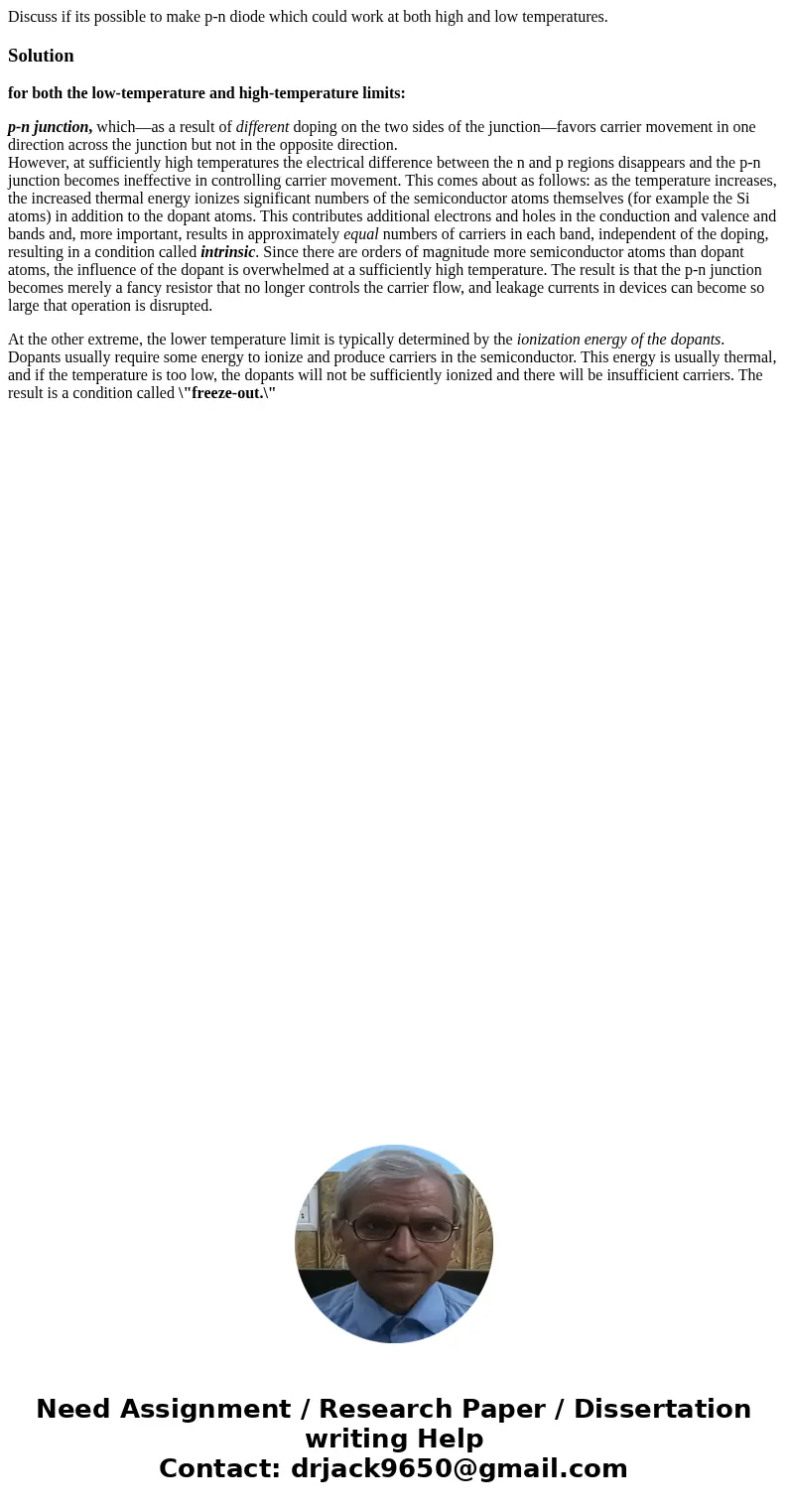Discuss if its possible to make pn diode which could work at
Discuss if its possible to make p-n diode which could work at both high and low temperatures.
Solution
for both the low-temperature and high-temperature limits:
p-n junction, which—as a result of different doping on the two sides of the junction—favors carrier movement in one direction across the junction but not in the opposite direction.
However, at sufficiently high temperatures the electrical difference between the n and p regions disappears and the p-n junction becomes ineffective in controlling carrier movement. This comes about as follows: as the temperature increases, the increased thermal energy ionizes significant numbers of the semiconductor atoms themselves (for example the Si atoms) in addition to the dopant atoms. This contributes additional electrons and holes in the conduction and valence and bands and, more important, results in approximately equal numbers of carriers in each band, independent of the doping, resulting in a condition called intrinsic. Since there are orders of magnitude more semiconductor atoms than dopant atoms, the influence of the dopant is overwhelmed at a sufficiently high temperature. The result is that the p-n junction becomes merely a fancy resistor that no longer controls the carrier flow, and leakage currents in devices can become so large that operation is disrupted.
At the other extreme, the lower temperature limit is typically determined by the ionization energy of the dopants. Dopants usually require some energy to ionize and produce carriers in the semiconductor. This energy is usually thermal, and if the temperature is too low, the dopants will not be sufficiently ionized and there will be insufficient carriers. The result is a condition called \"freeze-out.\"

 Homework Sourse
Homework Sourse